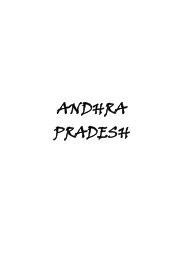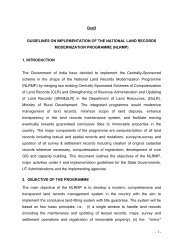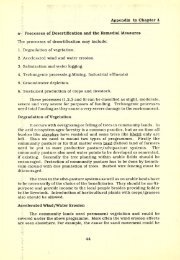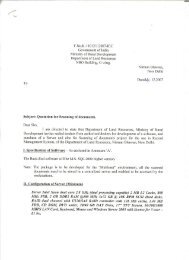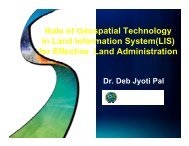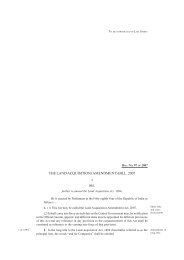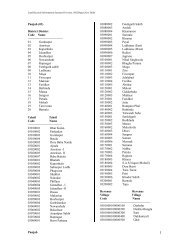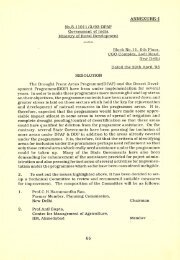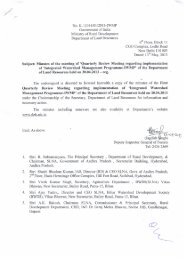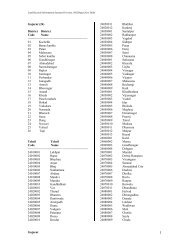Uttarakhand - Department of Land Resources
Uttarakhand - Department of Land Resources
Uttarakhand - Department of Land Resources
You also want an ePaper? Increase the reach of your titles
YUMPU automatically turns print PDFs into web optimized ePapers that Google loves.
CHAPTER 1<br />
INTRODUCTION<br />
<strong>Uttarakhand</strong> is located between 28 o 43' – 31 o 27' N latitudes and 77 o 34' – 81 o 02' E<br />
longitudes. The river Tons separates the state from Himachal Pradesh in the northwest,<br />
whereas the river Kali separates it from Nepal in the east. The greater<br />
Himalaya is the northern boundary <strong>of</strong> the state and is also the international border<br />
with China (Tibet). Foot-hills in the south are bound by Uttar Pradesh. Starting from<br />
the foot hills in the south, the state extends upto the snow-clad peaks <strong>of</strong> the Himadri<br />
making the Indo-Tibetan boundary. The region, being situated centrally in the long<br />
sweep <strong>of</strong> the Himalaya, forms a transitional zone between the per-humid eastern<br />
and the dry to sub-humid western Himalaya. <strong>Uttarakhand</strong> became the 27th state <strong>of</strong><br />
the Republic <strong>of</strong> India on 9 November 2000. Historically, <strong>Uttarakhand</strong> is believed to<br />
be the land where Vedas and the Shastras were composed and the great epic, the<br />
Mahabharata, was written.<br />
The average annual rainfall <strong>of</strong> the state, as recorded is 1,547 mm. With an altitudinal<br />
variation ranging from 200m to more than 8,000m above mean sea level. The<br />
climate <strong>of</strong> the state is quite harsh particularly in winter when temperature goes<br />
occasionally below freezing point in many <strong>of</strong> the subdivisions <strong>of</strong> the state.<br />
The state <strong>of</strong> <strong>Uttarakhand</strong>, embodying the Kumaon and Garhwal Himalayas with a<br />
geographical area <strong>of</strong> about 53,485 sq. km, supports a human population <strong>of</strong><br />
84,79,562 (Census 2001) persons. The state, also comprising two administrative<br />
divisions - Garhwal and the Kumaon, consists <strong>of</strong> 13 districts–Dehradun, Uttarkashi,<br />
Chamoli, Dehradun, Pauti Garhwal, Tehri Garhwal, Rudraprayag, Haridwar (in<br />
Garhwal Division), Almora, Pithoragarh, Nainital, Bageshwar, Champawat and<br />
Udham Singh Nagar (in Kumaon Division). It is further divided into 46 tehsils, 73<br />
towns, and 95 development blocks, 7541 Gram Sabhas, and 671 Nyay Panchayats<br />
and 16826 inhabited villages. The population constitutes 0.83% and 21.40% <strong>of</strong> the<br />
total population <strong>of</strong> Indian Republic and Indian Himalayan Region (IHR), respectively.<br />
Within an altitudinal variation ranging from 200 m to more than 8000 m above msl,<br />
the state comprises five lithotectonically and physiographically distinct subdivisions<br />
namely, the Outer Himalaya comprising the Tarai and Bhabhar, Sub-Himalayan belt<br />
1




